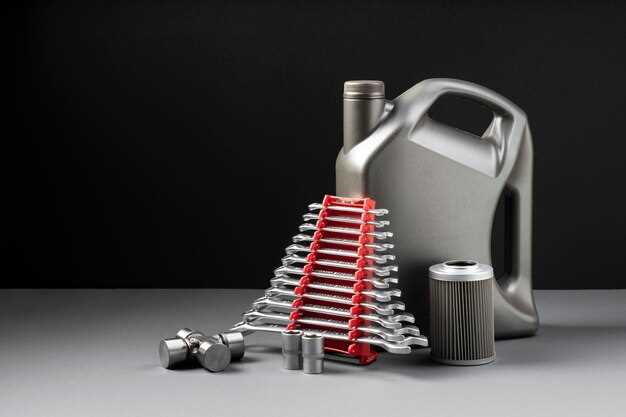
Maintaining your Ford vehicle involves several essential tasks, among which oil changes stand out as one of the most critical for ensuring optimal performance and longevity. Regularly replacing the oil not only keeps the engine clean but also protects its internal components from wear and tear. This guide aims to provide Ford owners with a clear understanding of the basic principles behind oil changes and practical tips to make the process as smooth as possible.
Understanding when and how to change your vehicle’s oil is crucial. Factors such as driving conditions, mileage, and oil type can influence the recommended intervals for maintenance. By following manufacturer guidelines and being attentive to your vehicle’s needs, you can prevent costly repairs and ensure that your Ford operates efficiently. This guide will walk you through the necessary steps and tips for a successful oil change, empowering you to take charge of your vehicle’s health.
In addition to the “how” of an oil change, it is essential to grasp the various types of oils available and their specific properties. Choosing the right oil ensures that your engine runs smoothly under different conditions. Our guide will explore different oil types, their benefits, and help you select the best option for your Ford, enhancing your understanding and confidence in vehicle maintenance.
Choosing the Right Oil for Your Ford Vehicle
Selecting the appropriate oil for your Ford vehicle is crucial for optimal performance and longevity. Various factors come into play when making this decision, including the engine type, climate conditions, and your driving habits.
First and foremost, consult your Ford owner’s manual. This document provides specific recommendations regarding the oil type and viscosity that is best suited for your vehicle. Most Ford models require either conventional, synthetic, or a blend of both oils.
Viscosity Ratings are indicated by a number followed by the letter “W” and another number (e.g., 5W-30). The first number signifies the oil’s performance in cold temperatures, while the second number indicates its thickness at higher temperatures. Choosing the right viscosity can significantly affect engine wear and fuel efficiency.
For colder climates, a lower first number will help ensure smoother starts and better protection during winter months. Conversely, a higher second number is beneficial for performance in hot conditions, ensuring adequate lubrication under pressure.
Synthetic oils offer several advantages over conventional oils, including improved protection against engine wear, better performance at extreme temperatures, and enhanced fuel efficiency. If your Ford is equipped with a high-performance engine or if you frequently drive under severe conditions, considering synthetic oil may be advantageous.
Always ensure the oil meets API (American Petroleum Institute) standards, which are crucial for maintaining warranty coverage and engine reliability. Look for the “API” symbol on the oil container, indicating it has been rigorously tested and approved for use in your vehicle.
Finally, stay mindful of the change intervals. Regular oil changes are essential to maintain engine health. Depending on the type of oil used and your driving conditions, this interval may range from 5,000 to 10,000 miles. Following these recommendations will not only extend the life of your engine but also optimize your fuel efficiency.
Step-by-Step Process for Changing Your Oil

Changing your oil is a crucial maintenance task that ensures your vehicle runs smoothly. Follow these steps to complete an oil change effectively.
Step 1: Gather Materials
Collect all necessary materials, including fresh oil, an oil filter, an oil filter wrench, a socket wrench, an oil catch pan, and a funnel. Ensure you have the correct type and amount of oil for your Ford vehicle.
Step 2: Prepare Your Vehicle
Park your vehicle on a flat surface and turn off the engine. Allow the engine to cool before starting the process. For added safety, engage the parking brake.
Step 3: Drain the Old Oil
Place the oil catch pan under the oil pan. Locate the drain plug, usually at the lowest point of the oil pan. Use the socket wrench to remove the drain plug and let the oil completely drain into the pan. This may take several minutes.
Step 4: Replace the Oil Filter
While the oil is draining, locate the oil filter. Use the oil filter wrench to remove the old filter. Before installing the new filter, apply a small amount of new oil to the rubber gasket of the new filter. This helps ensure a good seal. Install the new filter, tightening it by hand.
Step 5: Reinstall the Drain Plug
Once the old oil has fully drained, replace the drain plug. Use the socket wrench to tighten it securely, but avoid over-tightening, as this can damage the threads.
Step 6: Add New Oil
Open the hood and locate the oil fill cap. Remove the cap and place a funnel in the opening. Pour the correct amount of new oil into the engine. Refer to your owner’s manual for the specific oil capacity for your Ford model.
Step 7: Check the Oil Level
After adding new oil, wait a few minutes and then check the oil level using the dipstick. Pull the dipstick out, wipe it clean, reinsert it, and then pull it out again to check the level. Add more oil if necessary, ensuring it stays within the recommended range.
Step 8: Dispose of Old Oil
Properly dispose of the old oil and oil filter. Many auto parts stores and recycling centers offer disposal services for used oil.
Step 9: Run the Engine
Start your engine and let it run for a few minutes. Check for any leaks around the oil filter and drain plug. Turn off the engine and recheck the oil level, adding more if needed.
Following these steps will help you effectively change your oil, ensuring your Ford remains in optimal condition. Regular oil changes are vital for the longevity of your engine.
Frequently Asked Questions About Oil Change Maintenance

When it comes to maintaining your Ford vehicle, oil change is a crucial aspect that ensures the longevity and efficiency of your engine. Below are common questions related to oil change maintenance.
-
How often should I change my oil?
It is generally recommended to change your oil every 5,000 to 7,500 miles, depending on the type of oil used and your driving habits. Refer to your owner’s manual for specific guidelines.
-
What type of oil should I use?
Your Ford model may require specific oil types. Synthetic oil is commonly recommended for newer models, while conventional oil may be suitable for older vehicles. Always check the owner’s guide for the correct specifications.
-
Can I change my oil myself?
Yes, many Ford owners choose to perform oil changes themselves. Ensure you have the right tools and safety equipment. Follow the step-by-step process outlined in your maintenance manual.
-
What are the signs that I need an oil change?
- Engine warning light is illuminated.
- Oil appears dark and sludgy.
- You hear unusual engine noises.
- The oil level is below the recommended mark on the dipstick.
-
Is it safe to use synthetic oil in my older Ford?
Generally, using synthetic oil in older vehicles is safe. However, it’s important to confirm compatibility with your specific model. Consult your owner’s manual or a trusted mechanic if unsure.
-
What happens if I don’t change my oil regularly?
Neglecting oil changes can lead to engine wear, overheating, and ultimately a costly engine failure. Contaminated oil can’t lubricate effectively, which can result in severe damage over time.
Understanding these aspects of oil change maintenance can help you keep your Ford vehicle running smoothly.



